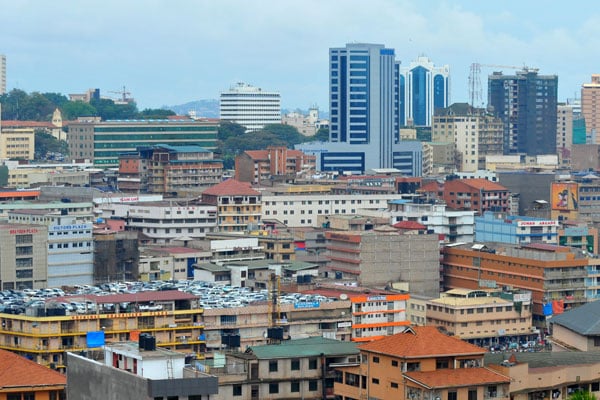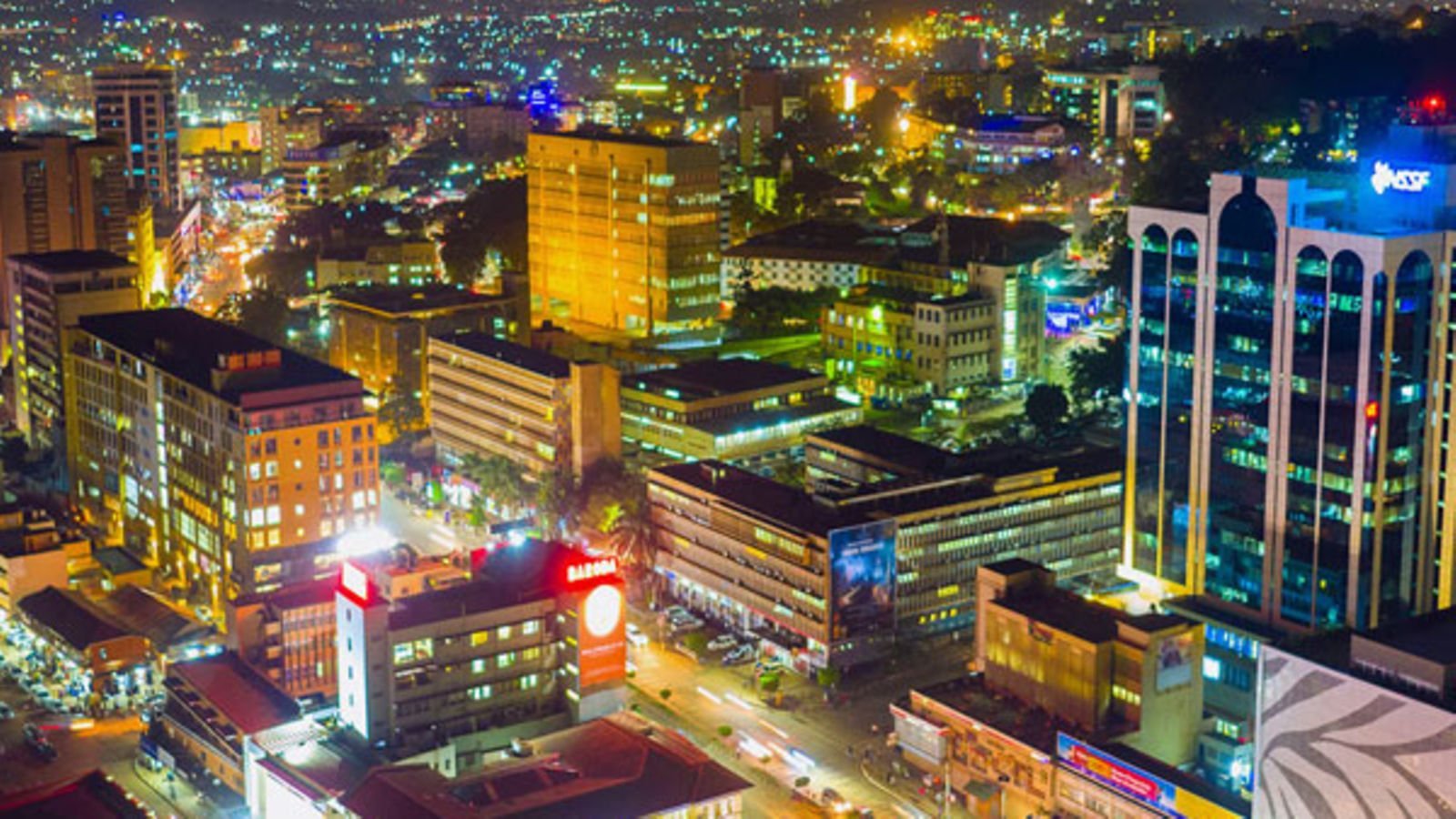Prime
Building new cities to meet Africa’s rapid urbanisation is a risky bet

Crowds are part of any normal day in downtown Kampala City. PHOTOS | GABRIEL BUULE
What you need to know:
- The agenda of new city building is not only being pushed by governments, but by a vast array of construction, real estate and technology companies, who stand to profit from the city construction boom, as well.
By 2050 an estimated 2.5 billion more people will be added to urban areas, with 90 percent of this growth taking place in Africa and Asia. According to Nobel Prize-winning economist Paul Romer, this will mean the building of more urban areas in the next 100 years than currently exist today.
If managed effectively, Africa’s cities will drive the continent’s economic growth, and thereby help reduce poverty. To date, however, Africa has yet to realise the positive gains of rapid urbanisation experienced elsewhere. Instead, increasingly concentrated populations have become a major stress on the limited infrastructure and services, such as housing, employment, health, education and safety.
Retrofitting cities, where cities already exist, can be up to three times more expensive than planning for infrastructure in advance of settlement. Therefore, some leaders see the construction of whole new cities as the overall solution to overcome the pressures on existing ones.
The idea of constructing new cities to solve urbanisation challenges is not new. In Africa, for example, the first post-independence wave came with some governments deciding to move their capital cities.
The motivations for this varied. In the case of Yamoussoukro, which was declared the capital of Côte d’Ivoire in 1983, the move reflected the desire of the then president Houphouët-Boigny to have the capital located in his home town.
In Nigeria, on the other hand, Abuja became the new capital in 1991 to relieve population pressures in Lagos. The choice of the site for Abuja was motivated by the fact that it was located in the centre of the country. It is also more ethnically neutral as it was located between the country’s northern, majority Muslim population and southern, largely Christian population.
The creation of the city of Abuja, therefore, was also to help bridge the divisions in the country in terms of politics as well as economic opportunity.
The fortunes of Yamoussoukro and Abuja offer important lessons for current planners of new cities, 120 are being built in 40 countries.
Although some people were attracted to Yamoussoukro by the prospect of a newly constructed international airport, and even the world’s largest church, most stayed away. While it continues to be the country’s administrative capital, most government institutions remain in Abidjan. On top of this, Abidjan is still the vastly more popular city. It is the economic hub of the country, with an estimated population of close to four million. Yamoussoukro’s population is approximately 200,000, making it only the 6th largest city in the country.

Congested city streets are often the motivator for new city creation.
Any new city takes time to grow. Abuja, though still much smaller than Lagos, which remains Nigeria’s economic hub, has, however, already experienced rapid population growth since it was founded. In 1987 its population was only about 15,000 people. Today, it has a population of more than three million.
Although not without its own challenges, there were two major advantages of Abuja. Firstly, at the time of its conception, the Nigerian government had a large amount of petrodollars. This meant that major investments in its infrastructure, such as water lines, could largely be made in advance of people settling. In addition, unlike Yamoussoukro, major government institutions were moved to Abuja. This spurred population movement through the civil service.
The myth of smart cities
The current wave of new city building is largely focused on leap-frogging economic development and moving Africa’s cities directly into the age of futuristic, technologically advanced, so-called ‘smart cities’. Plans for these types of cities are sprouting up across the continent; from Kenya, Mauritius and Senegal. Leading the way is Nigeria with five current on-going new city projects, which, when completed, are set to cover a landmass of 25 million square metres.
The agenda of new city building is not only being pushed by governments, but by a vast array of construction, real estate and technology companies, who stand to profit from the city construction boom, as well. Yet these new cities will want to avoid pitfalls of places such as Cyberjaya, Malaysia. Cyberjaya was the Malaysian government’s attempt to emulate Silicon Valley and pioneer such a hub in Asia. It was built on 2,800 hectares of undeveloped land, 40km south of Kuala Lumpur.
The idea behind the city was to create a space where intelligent minds from across the globe could reside comfortably and just concentrate on innovation. Malaysia hoped that its first mover advantage in the smart city arena would attract investors.
They also believed that Cyberjaya could be a model for the city of the future. Yet Cyberjaya has failed to live up to its reputation. In particular, a fundamental design flaw was the lack of understanding that people move to cities not only for the infrastructure but also the amenities, as well as to build networks and to integrate into existing networks. In conceptualising Cyberjaya, the Malaysian government largely ignored this.
Rather the city was envisaged only for the highly educated elite, who, it was assumed, did not require many further amenities outside a suitable work environment. As a result of the failure to understand the human aspect of cities, many parts of Cyberjaya have remained vacant to date.
Many of Africa’s upcoming “smart cities” exhibit similar conceptualisation flaws. Senegal’s futuristic city Diamniadio, a core part of President Macky Sall’s 2035 plan, is meant to be a “city of knowledge”. It will comprise an industrial park with entertainment facilities and residential areas. However, when the city is completed, which is intended to be by 2035, it is unlikely that the majority of Senegalese will be able to afford to live there.
An estimated $100b is being invested in new city projects across Africa; Diamniadio alone will cost the Senegalese government an estimated $2b. The assumption is that these investments will pay off. The logic is that these cities will attract the best and the brightest. In turn this should drive productivity increases that ultimately will repay the large loans.
In addition, as the new city of Eko Atlantic City in Nigeria has shown, land prices may increase substantially. So, if the government can capture these through land based taxes, this can help recoup costs too. But failure invariably comes with large debt bills that African countries cannot afford, and may leave large, unfinished ghost cities in its wake.
Not easy
But none of this matters without people being willing to live there. And what attracts people into cities are opportunities for social interaction and the socio-economic networks. In the case of Silicon Valley’s success, for example, it’s clear that the entrepreneurs employed by the firms themselves care about the business environment as well as the quality of life for themselves and their families.
Building new smart cities, in the hope people will follow, may be a higher-risk gamble that most African governments cannot afford. A surer bet is to study where people are already moving, which means where future urbanisation is likely to happen. Laying the foundations for this urbanisation to happen in an orderly and well-managed fashion, such as delineating basic road systems and investing in basic infrastructure before settlement takes place, as was done in Abuja, will go a long way to harness the potential of Africa’s urbanisation.
A smart city that works for everyone
Gregory Porumbescu Assistant Professor at the School of Public Affairs and Administration, Rutgers University, Newark, notes that cities promise a shining future, but without deliberate efforts to include underserved communities they can worsen the digital divide.
Smart cities are made possible by high-speed internet connections. They rely on big data, algorithms and the internet of things to better serve their increasingly diverse communities. For example, smart cities might use data collected from wireless sensors to predict the number of buses that need to be in circulation at a given time of day to reduce wait times.
The hope is that expanding the use of technology will allow smart cities to adapt services in real time to the changing needs and preferences of residents. However, unstable broadband access in many communities has led to concerns that reform efforts that focus on technology, such as smart-city initiatives, could reinforce existing social inequality.
Expanding access to high-speed internet in underserved communities will help ensure that the data used to inform smart public service delivery does a better job in describing the needs and preferences of a more inclusive cross section of residents and service users, and not just inhabitants of wealthy areas. To this end, bringing these communities true high-speed internet will prevent them from being excluded from the processes that inform public service delivery.
Access to high-speed internet will promote equity in smart cities since smart cities rely on systems of interrelated services that run simultaneously. Take, as an example, public transportation, air pollution control and public health.
Changes in traffic patterns need to be balanced with air pollution goals, which in turn need to take into account public health performance metrics. For example, interventions to temporarily improve traffic flow in one area can increase levels of air pollution beyond an acceptable level in another area, thus improving service for some and worsening it for others. In the context of smart cities, efforts to coordinate services require the availability of high-speed internet connections and a network of sensors.
Smart cities and governments’ growing reliance on technology promise to improve government performance, but they can also reinforce existing patterns of inequality. That said, broadband on its own will not be enough. Truly addressing systemic inequity will require governments to create meaningful opportunities for the diverse communities they serve to participate in the process.




